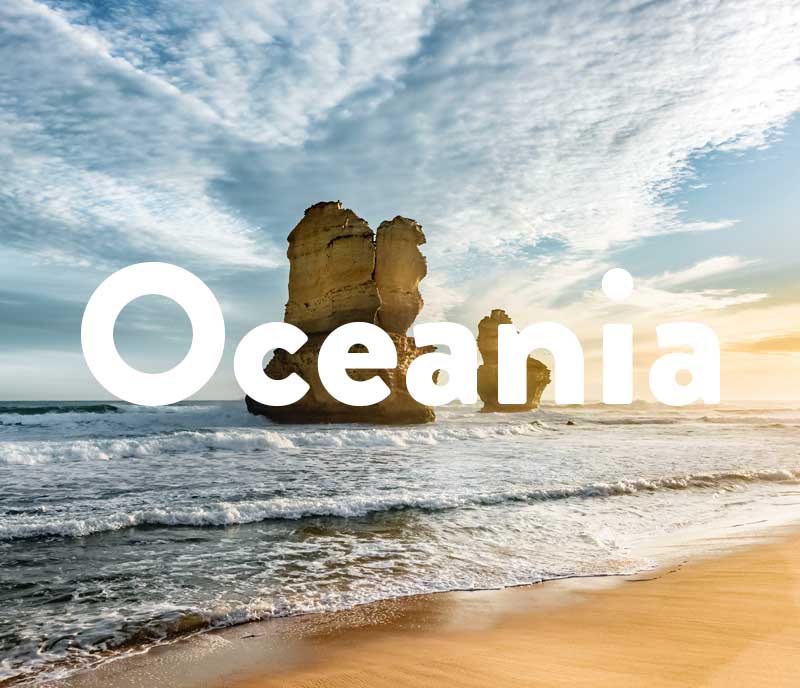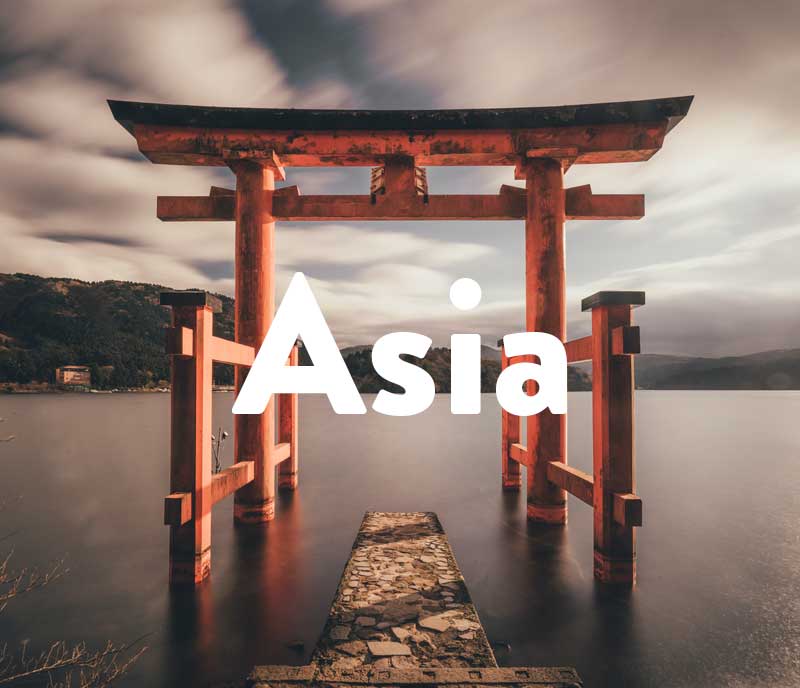The Great Wall of China, the Forbidden City in Peking, the Skyline of Shanghai, the Terracotta army, traditional local cuisines… Those are just some of the highlights waiting for you on your trip to China. Dive into the centuries-old cultural history of ‘the Middle Kingdom’ and get inspired by great philosophers like Confucius.
The country is huge, so you’ll discover China best through a round trip or by targeting a few places that you really want to see in-depth. You’ll find everything you need to know for this right here.
Dive into our (free) travel guides below!
.
.
.
.
.
.
.
.
The Key Info
China is almost twice the size of the USA and has a total area of 9,597,000km². In terms of both population size and geographical size, China is Asia’s biggest country. There’s around 1.4 million people living in the People’s Republic of China. Its capital city is Beijing, sometimes also called Peking. China is not only home to the biggest population in Asia, but also the world.
Its border, too, is the biggest in the world, measuring at over 22,000 kilometers! China also comes out in the lead in terms of the number of neighboring countries that border with a grand total of 14. In the West, India, Nepal, Bhutan, Kyrgyzstan, Afghanistan, Tajikistan and Pakistan border. In the north, China shares a border with Russia, Mongolia, North Korea and Kazakhstan. In the south, you’ll find Vietnam, Laos and Myanmar. In the east and the south-east meanwhile, you’ll discover the China Sea and the Yellow Sea.
As you might expect with a country this big, the climate varies across the country greatly. But to simplify it:
In most parts of the country, you’ll experience a continental climate with hot summers and cold winters. But in the south, tropical or subtropical climates reign.
China in numbers
- Population: 1.4 billion
- Total size of the country: 9,597,000 km²
- Capital city: Beijing (Peking)
- Currency: Renminbi (international ISO currency code is CNY)
- Languages: Traditional Chinese, Mandarin and recognized regional languages (such as Mongolian or Tibetan)
- Religion: religiously independent (73%), Buddist (15.9%), Christian (2.5%), Taoist (0.9%), Muslim (0.5%)
The 5 Largest Cities in China
#1 Shanghai
Translated, Shanghai basically means ‘Town above the sea’. With around 24 million citizens, it’s among the biggest cities in the world. The skyline of Pudong, full of skyscrapers, is without a doubt, the highlight of the town for tourists. You can get the best view of this from across the way on the Marine Promenade, ‘Bund’ (‘Waitan’ in Chinese’), on the west bank of the Huangpu River.
#2 Peking
With just three million fewer citizens, China’s second largest city is Peking with 21 million people. The Forbidden City is a palace compound and acts as the city’s tourist magnet. The Emperor of China resided here until 1911 and in 1987, the whole place became a UNESCO world heritage site.
Seventy kilometers to the north-west of Peking is the most well known part of the Great Wall of China – another pull for tourists.
#3 Guangzhou
Guangzhou is also known as Canton. Cantonese dishes should be familiar to most fans of Asian cuisine.
Around 13 million people live in the urban area, which is located in the southern part of China and is therefore subject to a humid, subtropical monsoon climate.
From the Canton Tower, not only architecturally interesting, but at 600 meters also the fifth tallest building in the world and a highlight for tourists, you get the best view of the city.
#4 Shenzhen
The fourth largest city in China with 12.3 million inhabitants, Shenzhen, also ranks as one of the best cities to live in nationwide. In the artist village of Dafen you can buy deceptively real copies of European painting classics.
#5 Hong Kong
Like Guangzhou and Shenzhen, Hong Kong lies on the Pearl River and is subject to a subtropical climate. Around 7.5 million citizens live in this impressive city. Around 3500 buildings tower over 90m tall and at dusk you can capture a wonderful view of the sparkling city from Victoria Peak. There’s a tram to take you up there.
TOP Tourist Attractions
#1 The Great Wall of China
The Great Wall of China meanders for more than 6,000 km from Jiayuguan in the west to Shanhaiguan in the east. Most tourists visit well-preserved areas of these historic imperial walls in Badaling near Beijing. However, accessibility is also available near Gubeikou (130 km from Beijing) and in Mutianyu (70 km northeast of Beijing).
#2 Victoria Harbour in Hong Kong
The natural harbor between Hong Kong Island and the Kowloon Peninsula offers fantastic views of the surrounding cityscape. We highly recommend a boat trip. Inexpensive ferries (approx. 30 cents) run in both directions at regular intervals. You can also take longer tours including drinks, for example with a Chinese Junk (approx. 35 euros). Every evening at 8pm, the houses on the Hong Kong Island skyline are animated in the “Symphony of Lights” light show.
#3 Boat trip on the Li River
Postcard-perfect photos are guaranteed on a river trip through the Karst Region around Guilin in southeast China. Countless green mountain peaks, over which hangs an atmospheric on most days, line the Li River and offer a picture book landscape. Trips from Guilin to Yangshuo are popular, but because boats always journey one behind the other, the view for photos is always clear.
Tip: go back to Guilin by bike! The terrain is flat and offers many beautiful landscapes.
#4 Die Hani-Reisterrassen in Yunnan
It’s no wonder that the Honghe Hani rice terraces in southern China made it onto the list of World Heritage Sites, since they are one of the most extraordinary cultural landscapes on earth. When all the fields are drenched in water in winter and spring, they reflect the sunshine at sunrise and sunset – an unmissable sight! The terraces are a dream for all amateur photographers and overall, it’s an impressive example of Chinese cultivation culture that is thousands of years old.
#5 Regional cuisine in Chengdu
You have probably already tried “Chicken Szechuan style” at a Chinese restaurant. In Chengdu, in southwest China, you can try the authentic dish. Chengdu is the capital of Sichuan (or Szechuan) Province, which according to local foodies has the best cuisine in the whole country (and also the hottest). Spend a morning at the spice market, learn how to cook typical Szechuan dishes in a local cooking class and feast your way through all the street food stalls and restaurants.
Best time to travel
The best time to visit China is during spring or autumn. Temperatures are pleasant during these seasons and there isn’t much rain. Compared to midsummer (think hot) there are far fewer tourists.
If you want to be there in time for Chinese New Year (on the new moon between January 21 and February 21), you will have to plan well in advance. Hotels and flights are usually fully booked.
Safety for Travelers
The crime rate in China is relatively low. However, pickpockets and various types of scams are common. You should therefore always keep your valuables safe and resolutely decline dubious offers. Never leave your drink unattended in bars.
In the rainy season (June to October) heavy rains, landslides and typhoons sometimes affect the south and southeast. Find out about the weather before you travel.
Homosexual travelers should be cautious being open in public as it can lead to discrimination. Same sex is not a criminal offense, but the legal position is not fully clarified.
Most important holidays in China
- 1. January: New Year
- One week in late January / early February (based on the lunar calendar): Chinese New Year
- March 8: Women’s Day
- April 4th or 5th: Qingming Festival (Chinese funeral festival)
- May 1st: Labor Day
- Around June 25th (on the 5th day of the 5th month according to the Chinese lunar calendar): Dragon Boat Festival
- September 27th: Lunar / Mid-Autumn Festival
- 1st-7th October: National Day of the People’s Republic of China
Visas for China
You need a visa to enter China. You have to apply for this personally at a Chinese Visa Application Service Center (available in your capital city and sometimes closer to home). Participants in group trips can get their visa from the organizer.
Currency
In larger cities you can get cash at ATMs with all major credit cards. International bank cards are only accepted to a rather limited extent. You should always have a certain amount of cash with you in case you cannot pay electronically.
DOs and DON’Ts in China
| Do | Don’t |
| Take off your hat or cap when you enter temples. | Do not express yourself on politically sensitive topics. |
| The number ‘4’ is a number that brings bad luck. Don’t be surprised if the 4th or 14th floor of hotels is shown differently or left out. | When eating in China, you can talk, smack and slurp with your mouth full. But blowing your nose at the table is frowned upon. |
| Shaking hands in greeting is okay (pandemic aside). Bowing is more common in Japan or Korea. | Do not take any liquids with you on buses and trains (including drinking water, cooking oil, yogurt). This is prohibited. |
| Always drink water of trackable safe origin, never tap water. If possible, use drinking water to brush your teeth. | Do not take photographs of uniformed people or military facilities. |
| If you plan to travel to several places in China: Trains are a cheap alternative to domestic flights. China has a very well developed rail system. High-speed trains, night trains or inexpensive slow trains will take you from place to place. | Do not try using any VPN services. Access to the Internet is controlled by the state. Access to Google, Facebook, Twitter and Whatsapp is blocked. |
| Outside the cities, medical care is limited. If you are dependent on certain medications, you should bring an adequate supply with you. |
Packing Must-Haves
- Passport, visa, flight ticket, international health insurance certificate (obviously)
- Rain jacket
- Comfortable shoes
- Personal medication
- Sun protection (sunscreen, hat, sunglasses)
- Mosquito spray
- Adapter (or universal adapter)
- Mobile phone charging cable
- Emergency numbers for your bank and health insurance company
- Disinfectant wipes (the hygienic conditions in public toilets are often poor)
Secret Tips From Bloggers
The Blonde Abroad suggests keeping a business card from your hotel to show to taxi drivers, since in smaller towns you can’t take English for granted.
If you’re planning a backpacking trip, The Broke Backpacker suggests you stick to one region to get really in depth. There’s so many beautiful sites in China, there’s no way you’ll see it all, so you might as well enjoy your time properly.
Don’t know where to eat? Josh from Travel China Cheaper recommends always asking a local person first. Plus, he says, you get the added benefit of chatting with locals.
TOP 7 Instagrammable Places
- #greatwallofchina (397,476 posts)
- #zhangjiajie (161,546 posts)
- #cantontower (76,000 posts)
- #giantbuddha (26,289 posts)
- #shanghaiskyline (20,383 posts)
- #yuanyang (17,637 posts)
Did you know – Fun Facts about China
… that the Great Wall of China is visible all the way from space?
… that Chinese chopsticks differ from Japanese? They’re slightly longer than Japanese sticks and have blunt ends.
… that an Oktoberfest-like beer festival, the largest in Asia, takes place every year in Qingdao, China? Even bratwurst and sauerkraut are served, and there are also Bavarian music bands.
…that the popular Tsingtao beer was originally brewed according to the German Beer Purity Law?







